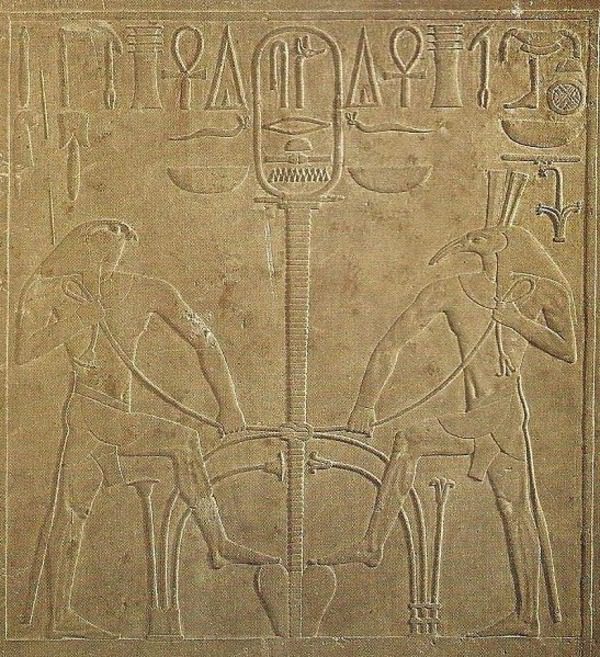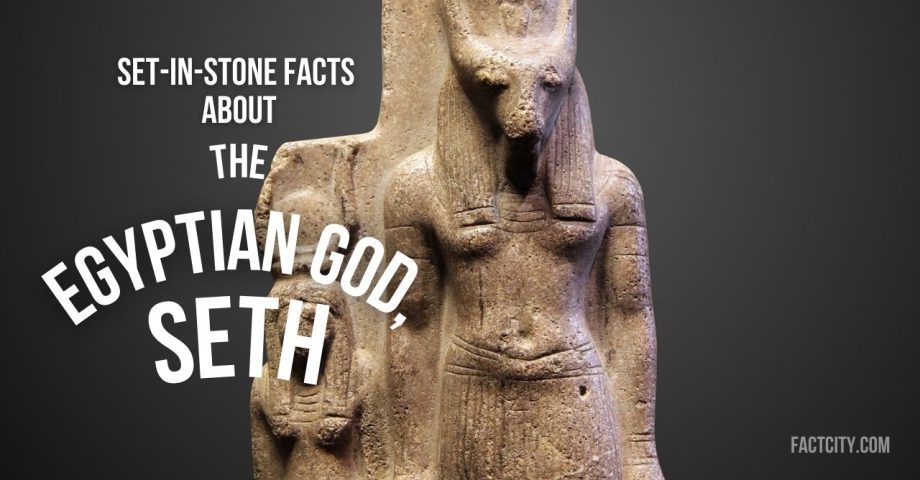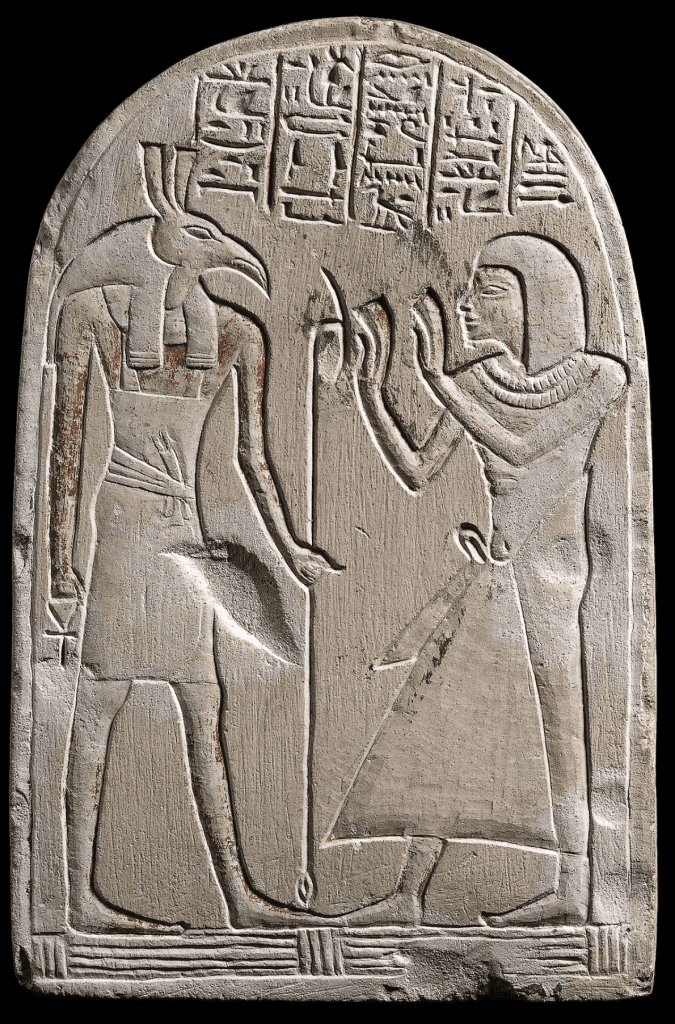Among the many Egyptian Gods, Seth is easily one of the most famous, even if many people are unsure how to pronounce his name! But, who is Seth? What was his power? And, why was he so worshipped? Here are some fun facts about the Egyptian God Seth that might come in handy at the next pub quiz.
1. His name isn’t pronounced in the way you probably think.
Although we know him as Seth, his Egyptian name is “Set” (also spelled “Seth” in Greek). It’s pronounced as “set” or “seht.”
2. He is represented by a combination of creatures.
As is often the case with Egyptian Gods, Seth was thought to have been a mix of different creatures. He was depicted as a creature with the body of a man and the head of an enigmatic animal, usually thought to be a combination of a donkey or an aardvark. A striking figure, then!
3. He is the Egyptian God of chaos.
Seth was primarily known as the God of chaos, storms, and the desert. His unpredictable nature represents the forces of disorder in Egyptian mythology. One of the most famous myths involving Seth is his conflict with his brother Osiris. Seth murdered Osiris out of jealousy and ambition, leading to a long-lasting feud between them. Seth supposedly cast his brother into the Nile via coffin. Osiris would then become the God of the underworld.
5. He is also seen as a symbol of a need for change.
As much as Seth represents chaos, there is something else in there to be seen. Seth is also believed to embody the duality of nature. That is to say that while he represents chaos and destruction, he’s also seen as a necessary force for renewal and change.
6. Seth is also the protector of Ra.
Seth was also known to be a loyal protector of Ra, the Sun God. In this role, he battles the serpent Apep (Apophis) every night to prevent it from devouring the Sun.
7. He wasn’t always a beloved God.
Given his role in the mythological world, it may come as no surprise that Seth was not always revered. In fact, the worship of Seth was more prevalent in certain periods of ancient Egyptian history, while in others, it diminished due to his association with chaos and destruction. In some areas of Egypt, he was seen more favourably, while in others, he was considered a malevolent deity.
8. There used to be a Seth Festival!
The ancient Egyptians were known to celebrate Seth via his own festival despite his reputation. During the festival, rituals and ceremonies were conducted to placate Seth and prevent chaos from spreading. Think of these celebrations as worshippers’ ways of trying to prevent Seth’s negative influences.
9. Some believed he reconciled with Horus.
In some variations of the myths, Seth and Horus (the son of Osiris) eventually reconcile. This reconciliation meant the restoration of order and unity to many. That probably took some deep forgiveness on Horus’ part!
10. Many also saw Seth as a representation of stability.
As strange as it may seem given his chaotic nature, Seth was also seen as a stabilizing force. His connection to desert landscapes and his ability to fend off threats aligned him with the concept of territorial boundaries.

FAQs about the Egyptian God Seth
Is Seth good or bad?
Seth was mostly seen as being the God of evil. He was also well-known for murdering his brother; therefore, for the most part, he was regarded as a pretty negative influence! That said, some people saw him as a stabilizing force.
Are Seth and Anubis the same?
In some myths, Anubis was known as the son of Seth. However, in other myths, Anubis is the bastard son of Osiris.
Why did Seth hate Osiris?
In Egyptian mythology, it was believed Seth was jealous of Osiris’ power and beauty. It was also believed that Seth’s wife, Nephthys, conceived Osiris’ child, Anubis. Therefore, Seth had multiple reasons to hate and eventually plot the murder of his brother, Osiris.
Further reading
https://facts.uk/tag/ancient-egypt
https://egyptianmuseum.org/deities-seth
https://web.sas.upenn.edu/discentes/2023/04/23/seth-a-dynamic-and-enigmatic-god/
Do you know any fun facts about the Egyptian God Seth? Share them in the comments below!











